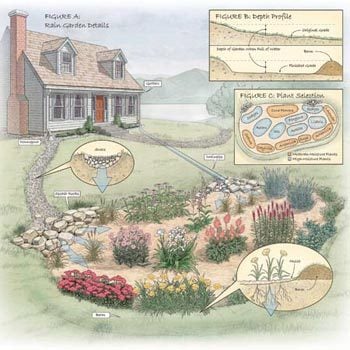Joshua Myrvaagnes wrote:
City regulations say you have to handle all your runoff on your land. Which is the first helpful thing I've heard yet. Yes, we have a good City council!
But my housemate says the contractors who did another job here said we need to have a big box stuck in the back yard with holes in it, and water will gradually diffuse out of it into the soil. 5' cube (about 2 m cube).
We get about 40 inches (1 meter) rain per year, officially ( though recently it's been in big bursts with long dry periods between.)
Is this OK? it's far enough away from the house (10' is what I recall as danger zone, from someone with more experience and wisdom on this site).
Supposing you had to convince people cautious about unusual fixes for problems, what might you say to present this?
Indeed, you have a great City Council! I wish: We have large ag fields, and they run a lot of manure that runs in the ditches and ruin the groundwater!
I don't think that a 2m cube/ 5'cube will be enough to handle just your roof runoff if you get 40"of rain a year. You will need to calculate how much water falls on your roof in a one inch rainstorm and X by 40. You will be amazed at the amount of water! Here is a link to help you calculate accurately:
http://www.friendsoflittlehuntingcreek.org/description/roof.htm
You did not indicate what kind of soil you have, but if you want to keep water nearby, how about using that water for crops? We live in very sandy soil but we wanted blueberries, so I had a 33' X 4'X4' ditch built [yes, we asked for help

]
We mounded the original dirt on the edges and placed several tarps and filled with a mixture of that soil [sand, really] wood chips and sawdust. [The tarp was not water tight: I left it open on both ends]. From the corner of the house, I ran an 8" PVC pipe to the ditch. You'll have to see what you can do to keep the water farther away from the foundations, or you may get even more water if your water table is already high.
I put a hedge of blueberries and we are very happy with the results. You may also look at trees that really absorb a lot of water. Basswoods [Tillias] are very good, so are gooseberries and elderberries. NO to willows!: They do suck a lot of water, but their roots are extremely invasive and will bust concrete!
Something that just contains water that slowly escapes can still overrun its boundaries in a harsh rain, but once you add as much soaking vegetation as you can, whatever hole you can make will really help.
As far as convincing arguments, I'll give you 3: crops, water retention for a good purpose [the material will filter the water], no mosquitoes.

 1
1




 4
4







 1
1




 ]
]











